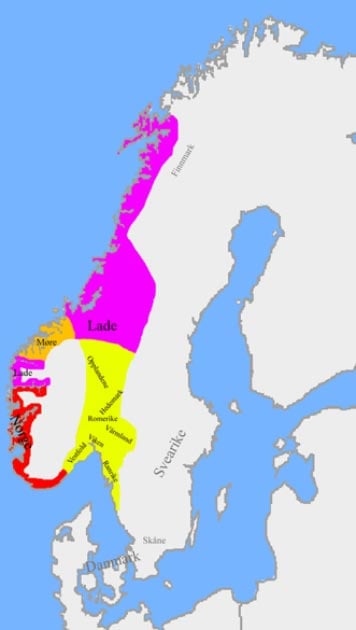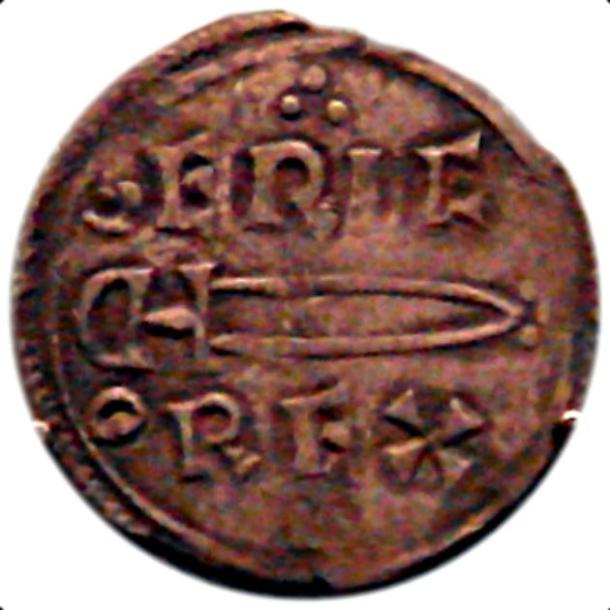The Story of Harald Fairhair, First King of Norway
The early history of Norway, and Scandinavia in general, is characterized by powerful seafarers, traders, and warriors and by rich heathen mythologies and ambitious chieftains. The fierce sons of these northern lands dominated the sea routes of northern Europe for centuries and singlehandedly changed the course of many a nation's history. But they were never a single and dominant force.
Instead, they were divided up into many small, petty kingdoms, ruled by overly ambitious chieftains - each one wanting the finest loot and the perfect raids. That was, until a man stepped up - a man to unite them all and form a new, vast kingdom with a single ruler at its head. That man was Harald Fairhair.
Widely considered as the first King of Norway, this shadowy historical figure is debated by scholars to this day. Did he truly exist? Are the sagas correct? Today we will attempt to give our own answer, as we explore the intriguing story about the man behind the modern Norwegian nation - Harald Fairhair.
In His Father’s Footsteps – Harald Fairhair Comes to Power
In Viking era Norway and Scandinavia, literacy was largely nonexistent, outside runic inscriptions. It only came to these lands with Christianity, and that means that there are few written sources from the early periods, other than the sagas - written centuries later. In the Viking society, great deeds and great heroes were the subject of songs and tales - but only in oral form.
Skaldic poetry was a great tradition of the north - skilled skalds (bards) were used by the kings to sing praises of their deeds, often creating larger than life figures. In a sense, good skalds were essential propaganda units in early medieval Scandinavia. And the king-to-be, Harald, knew this all too well.
But even so, oral tradition tends to fade out in time, and the only written accounts mentioning Harald Fairhair - less than a dozen of them - were assembled substantially after his life and deeds had ended. The main sources are several sagas - chiefly the Heimskringla, which contain the Saga of Halfdan the Black and the Saga of Harald Fairhair, then the Orkneyinga saga, the Floamanna saga, Egil's Saga, and a few others. Another good source is the Historia Norwegiae from Theodricus Monachus. None of these king sagas are older than the 12 th century.

The single surviving page known as the ‘Kringla leaf (Kringlublaðið)’, kept in the National and University Library of Iceland, is one of the main sources of the history of Harald Faihair. (Soerfm / Public Domain)
What we can learn from these sources is that Harald was already destined to walk on the path on which he did - since his father had already begun the grand plan of uniting the petty kingdoms under a single banner. That man was Halfdan the Black (Halfdanr Svarti), born around 810 AD into the legendary Scandinavian dynasty of the Ynglings. Both the Heimskringla and the Fagsrkinna, the sagas of the 12 th century, give us some important details about Halfdan, and thus some history of Harald Fairhair.
Halfdan himself was born as a son of a petty king - Gudrød the Magnificent, and his wife, Åsa Haraldsdottir, was daughter of the King of Agder, another petty kingdom. Halfdan's father was murdered when the boy was yet an infant, and his mother had to flee back to her father's kingdom, Agder, where she raised her son. Fast forward about 19 years when Halfdan the Black inherited the title of the King of Agder and he quickly showed his skill in ruling, as he enlarged his lands and wealth.
His careful and tactical subduing of the lesser kingdoms around him clearly paved the way for the future and for his son to successfully unite them all. Halfdan first managed to take half of Vingulmark - a petty kingdom ruled by King Gandalf Alfgeirsson. Then came Raumarike - a kingdom he subdued after winning a series of conflicts with it rulers.
After that, through a cunning marriage he managed to claim the kingdom of the Sogn fjords. He married the daughter of Sogn's king and had a son. This son was named the heir of Sogn, but died young - leaving the kingdom to Halfdan, his father.
Through cunning, tactic warfare and shrewd politics, Halfdan the Black managed to expand his inheritance and create a large kingdom. His plans, sadly, fell into water - quite literally - when his carriage fell through ice in Randsfjorden. Halfdan the Black and all his party drowned. He left behind an heir - Harald Fairhair.

Illustration from the saga of Halfdan the Black, the father of Harald Fairhair. (Jorunn / Public Domain)
Harald Fairhair Secures His Crown
Right from the get-go, young Harald and his uncle and protector, Guthorm, were under threat. With the death of Halfdan, the kingdoms he conquered could quite easily and quickly turn to revolt, seeking to retake their lost independence. The fact that worked against Harald is that the kingdom was not a single form – it was scattered and disconnected, and thus hard to manage.
Soon enough, this came to pass, and young Harald Fairhair was to quickly discover the true meaning of kingship. His first opponent was Hake Gandalfsson, son of the deposed and killed King of Vingulmark, Gandalf Alfgeirsson. Hake’s brothers, Hysing and Helsing, were killed in battle years previously, by Halfdan the Black.
Seeking vengeance, Hake – now considered a berserker – quickly sought to depose of young and seemingly inexperienced Harald. He assembled a vast army from Vestfold that numbered some 300 well-armed warriors. In early medieval Norway, this number was a large army and one tough to defeat. The saga then tell us that – as great heroes do – Halfdan and Guthorm cunningly defeated Hake Gandalfsson with a much smaller army, seemingly through an ambush.
Through skillful governance of his territories, Harald managed to raise more men in hopes of securing his kingdom. This proved smart, because soon afterwards he faced his biggest obstacle. An opposition formed in Norway, seeking to reclaim lost kingdoms and stand in the path of what was quickly beginning to look like an attempt at unifying Norway.
The main opposition was Sulki, petty King of Rogaland and his brother Earl Soti, then Eirik, King of Hordaland, and with them Kjotvi the Wealthy, King of Agdir with his son Thorir Haklang. They were joined by two brothers who ruled Telemark – Hadd the Hard and Hroald Hrygg.
This was the core of Harald’s enemies. Both factions worked desperately to assemble as many troops as possible. Their conflict culminated in 872, at the Battle of Hafrsfjord near Stavanger. At the time this could have easily been one of the largest battles – naval or otherwise – fought in Norway.

The Battle of Hafrsfjord resulted in the unification of Norway by Harald Fairhair. (Anne-Sophie Ofrim / Public Domain)
The vast armies clashed in a great naval battle in the fjord that was part of Rogaland. Most of the opponents of Harald fell in battle – Eirik was killed, Sulki and Soti fell, and Thorir Haklang went berserk and was slain. His father, Kjotvi the Wealthy was the only opponent to survive, fleeing as he witnessed the overwhelming defeat. He is not mentioned again after that.
Harald Fairhair’s victory at Hafrsfjord is widely considered in folk celebrations as the birth of an independent and unified Kingdom of Norway. And that is somewhat correct – after his great victory, Harald proclaimed himself as the sole king of a unified Norway – without opposition to his claim.
- What Really Happened at Viking Funerals? It’s Not What You Think!
- The Sharp Edge of a Viking Axe - Cut Out for More than One Job
- Viking Chief Tore Hund and his successful resistance against Christian conversion

King Harald Fairhair’s division of Norway. (Tokle / Public Domain)
After his victory, Harald quickly sought to cement his rule. And again, he had shown his shrewd diplomacy, by marrying a daughter of a Danish king. At the time Denmark was the foremost and powerful nation to his south, and he wanted them as allies.
Harald Fairhair not only secured an alliance, but also portrayed himself as a true monarch of Norway – a confirmation of his kingship. Further proof that Harald’s rule over the whole of Norway was stable, is the fact that the king of Denmark led serious negotiations before agreeing to give the hand of his daughter in marriage.
Plenty of skaldic poems that were made during the supposed lifetime of Harald Fairhair survived, and they give us both actual historic facts and some details that seem larger than life. One such aspect is a highly romanticized tale of just how Harald decided to unite Norway. As the poems and stories tell, Harald fell in love with a certain woman, Gyda, which was among the fairest in Norway.
But she refused his declarations of love, teasingly saying that she will only accept a king of a whole Norway for her husband. He then swore to do exactly that, in order to gain her love.
Another romantic detail says that Harald swore not to comb his hair until he became King of Norway. He then became Harald Lufa (Harald Matted-Hair). After his conquests were finished, the tales say he was given a rich feast at Maeri, by Earl Rognvald.

King Harald Fairhair was honored by a feast. (Alonso de Mendoza / Public Domain)
The same earl then proceeded to at last comb Harald’s long hair, showing to all how beautiful it was, and the king finally earned the epithet Harald Fairhair. These are almost surely skaldic embellishments and have no basis in reality, even though Earl Rognvald is a historic figure – one of the first supporters of the newly crowned Harald, alongside Earl Atli the Slender.
The latter could also be a very interesting metaphor – one that was craftily snuck in by the Christian chroniclers in the centuries after Harald. The metaphor is clear – the earl removes the matted, dreadlocked hair of a warrior (a metaphor for heathen, tribal Vikings) and reveals a king with lovely and fine hair (a metaphor for the civilized Christian sovereigns).
Harald Fairhair’s victory at Hafrsfjord and his rise to power as a monarch also had influence on neighboring lands – most notably the settlement of Iceland. A good number of nobles, warriors, and their families, who were against Harald in the conflict, chose to flee rather than be subjugated. And their destination was Iceland – freshly discovered and barely settled at the time.
Harald Fairhair also extended his influence onto the Orkney Islands and Scotland. The Vikings who ruled there as earl were obliged to pay tribute and accept him as their king.
The War of Harald Fairhair’s Sons & Grandsons
In the subsequent writings, two of Harald’s sons are mentioned – Erik Bloodaxe and Haakon the Good. The younger, Haakon, was sent to the court of King Athelstan in England – seemingly to remain safe or as a diplomatic hostage or envoy. Either way, he spent his youth in Anglo-Saxon and Danish England, while his older brother, Erik Bloodaxe, inherited the throne of Norway after his father Harald Fairhair died. By that time, Erik had grown sons of his own.

Coin of Eric Bloodaxe, Harald Fairhair’s son who succeeded him as king. (PawełMM / Public Domain)
But soon after Erik became king, Haakon Haraldsson set sail from England in an attempt to seize the throne from his half-brother. Unlike the still pagan Erik and the rest of the Norway, Haakon took to the religion of the Anglo Saxons – he was a Christian. There is a possibility that Haakon’s expedition was backed by the English.
Either way, Haakon landed in Norway and began securing his allies. He promised to end the taxation over inherited property, which was begun by his father Harald Fairhair. He became allied with Sigurd, Earl of Lade, and quickly had a solid foothold in Norway, indirectly or directly controlling considerable parts of it.
Erik Bloodaxe was soon out of favor and found himself basically surrounded and without many allies. He was forced to flee to the Orkneys, and from there to Jorvik in Northumbria. He was killed there with his son Haeric, in the Battle of Stainmore in 954, against the Earl of Bernicia.
But his sons remained as a force to oppose Haakon in Norway. They led a series of bloody battles against the forces of Haakon. In the first one, at Avaldsnes, Haakon won and one of Eric’s sons, Guttorm, was killed. In the following year, the Battle of Rastarkalv was fought and was another victory for Haakon. In it Eric’s son, Gamle, died.
- With Portals to the Dead, Viking Homes Were Stranger Than Fiction
- 8 Notorious Vikings Who Left Their Bloody Marks on History
- The long goodbye to Scandinavian Paganism and the Christianization of three realms

Obelisk memorial for the men who died at the Battle of Rastarkalv. (Zaarin~commonswiki / CC BY-SA 3.0)
Several years after this defeat, in 961, the three remaining sons of Eric Bloodaxe returned to Norway and surprised Haakon the Good at the Battle of Fitjar. This battle was yet again won by Haakon, but he paid for it with his life. He was wounded and quickly died.
The title of the King of Norway then passed to Harald Greycloak, the eldest surviving son of Eric Bloodaxe and the grandson of Harald Fairhair. But his rule was marked by years of warfare in Norway and he was finally murdered by allies of the Danish king Harald Bluetooth who became the King of Norway, for a few years. He too was deposed and murdered and the circle kept repeating…
The Swords Never Sheathed
There is no doubt that the history of Norway and its beginnings as a nation was marked by the warlike and somewhat greedy nature of the Norsemen. True to their Viking lifestyle, their transition from seafaring warriors to traders was not smooth.
Instead it was marked by wars and assassinations. But the importance of the shadowy and almost mythical figure of Harald Fairhair is important to remember.
Top image: Representation of Harald Fairhair, the first King of Norway. Source: Fotokvadrat / Adobe Stock.
References
Du Chaillu, P. 1889. The Viking Age. Charles Scribner’s Sons.
Kendrick, T. 2004. A History of the Vikings. Dover.
Lincoln, B. 2014. Between History and Myth: Stories of Harald Fairhair and Founding of the State. The University of Chicago Press.
McKitterick, R. 1995. The New Cambridge Medieval History – Volume 2: c. 700 – c. 900. Cambridge University Press.



















